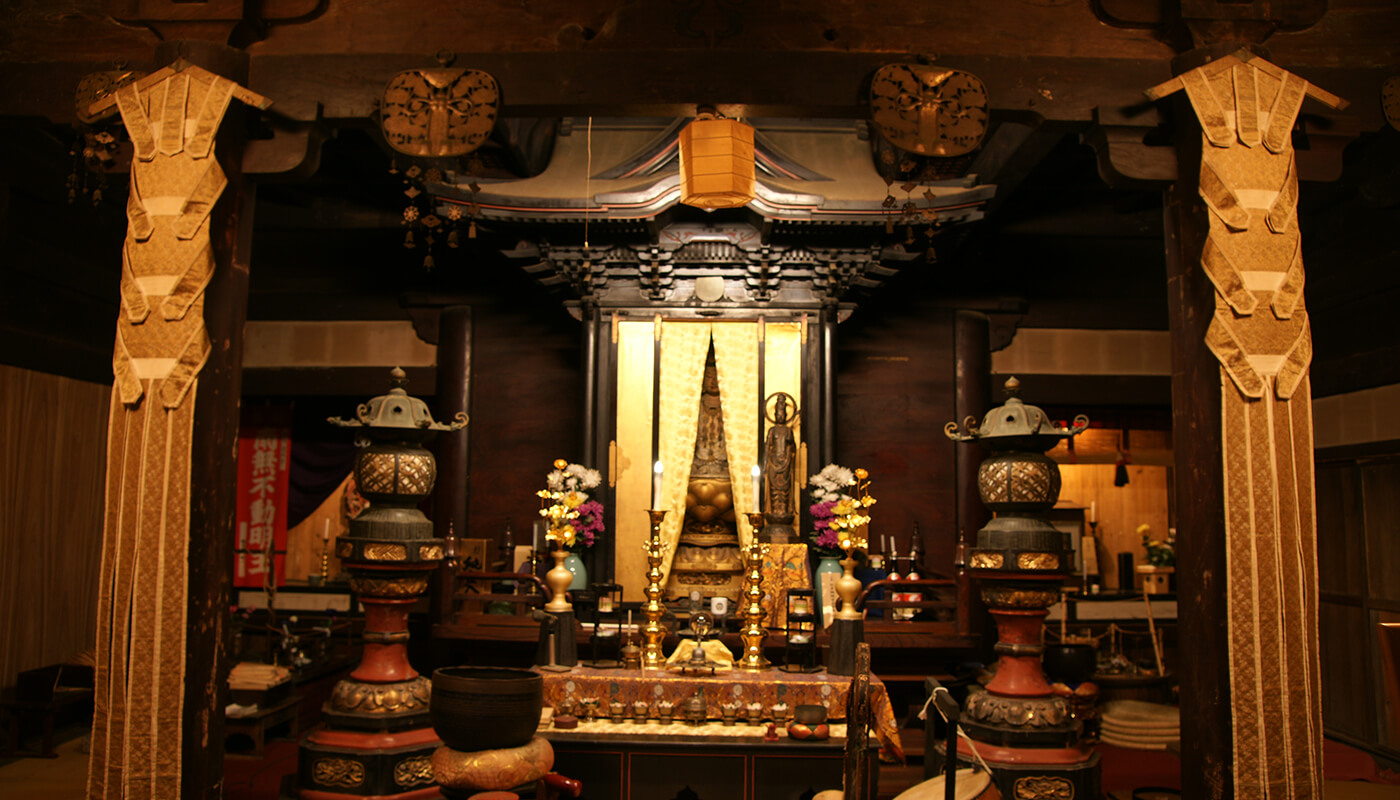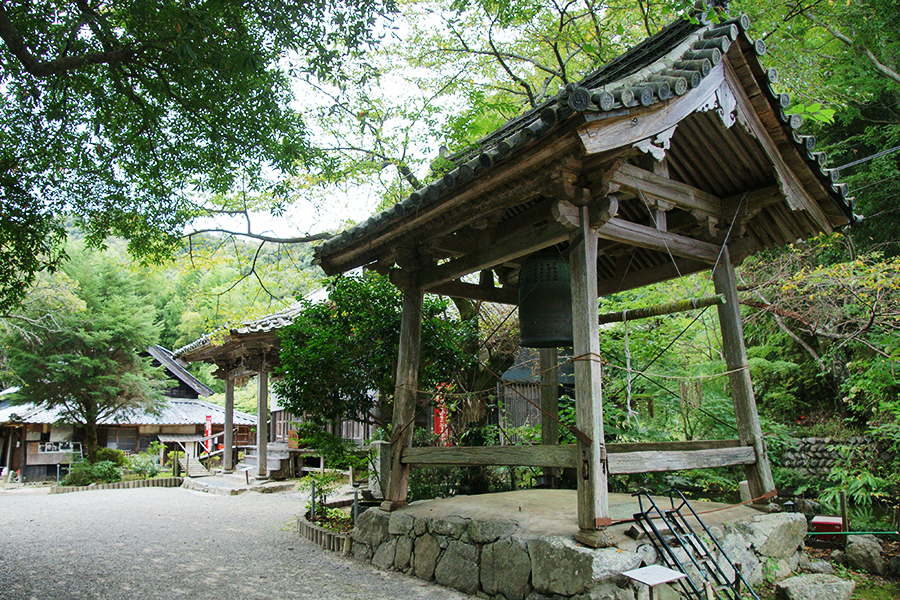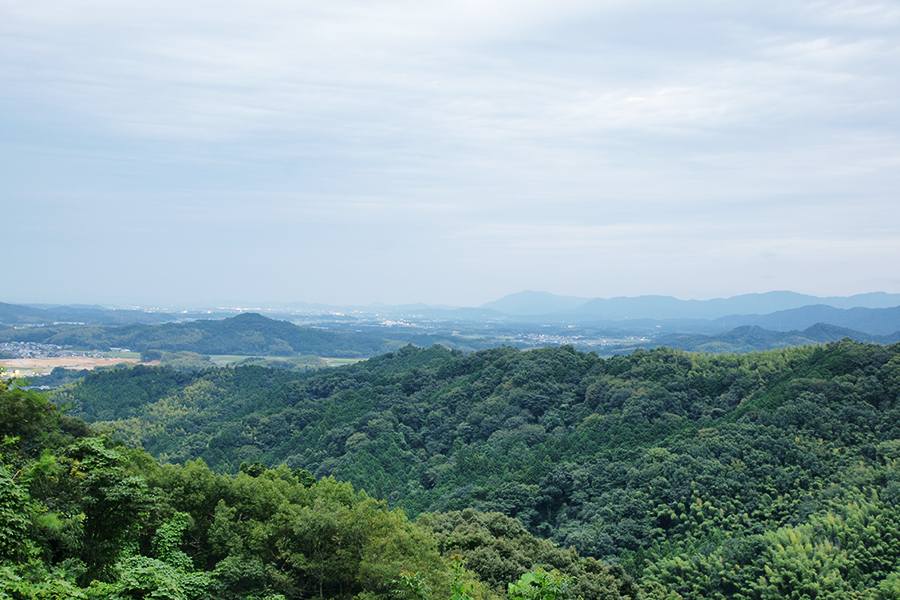Number 10Kongōza-ji temple
History of the temple
The old name of this temple is Anashi-ji and there are two theories concerning its beginning. According to the first one the temple was founded in 673 by 7th Century statesman, courtier and politician Fujiwara Kamatari (614-669). The second theory suggests it was built by one of his sons – Fujiwara Fuhito (659-720) in 680. Anashi-ji was directly connected and governed by Shido-ji, a temple from Sanuki province in Shikoku, which is a temple number 86 of Shikoku Pilgrimage. The main statue worshiped at Anashi-ji was Jūichimen Kannon (Eleven-Faced Kannon).
In 693 Fuhito relocated Nyoirin Kannon (Omnipotent Kannon) statue from Shido-ji to Kongōza-ji, which after the consecration ceremony performed by famous monk Gyōki (668-749) became a main statue worshiped at the temple. Nyoirin Kannon statue was originally made by Fujiwara Fusasaki – one of the sons of Fuhito. He lost his mother when he was very young and once he got older he wanted to pay her respect. Therefore he made a statue looking like his mother and offered it to Shido-ji. When his father Fuhito learned about his son devotion, he was so impressed that he moved the statue to Kongōza-ji and made the temple her bodai-ji (a temple performing ceremonies in her soul’s favor). Since then that Nyoirin Kannon statue is known as Shido’s Lady Kannon.
This story of the temple’s beginning uses some parts of the legend told in Shido-ji, which is also a famous Noh theater song Ama no Tamtori Densetsu (Legend of a Pearl Diver who brought back the Jewel). In this legend a pearl diver sacrificed herself to bring back to lost jewel from the Ocean depths. The diver was actually Fusasaki’s true mother. She helped Fuhito, whose undercover mission was to bring back the lost jewel, which was sent from his sister – one of the wives of the Chinese Emperor. In exchange of the pearl diver’s sacrifice, Fuhito made their son Fusasaki an official hair to his name.
The area where Kongōza-ji stands is called Sana and it appears in a chronicle Kojiki (Records of Ancient Matters) composed in 711. Sana had a strong connection with Fujiwara clan, who mainly worked in imperial department of worship at the time. Fujiwara clan also had a deep relation with Shido-ji temple, by which Kongōza-ji was governed. Based upon this knowledge it is possible to assume that Kongōza-ji also had a strong relationship with the Fujiwara clan.
At the top of the nearby mountain there is a site on which Anashi Shrine, a shrine recorded in 10th Century book about laws and customs Engishiki (Procedures of the Engi Era, 927), used to stand. It probably started as a family temple of a clan who lived in Yamato province (Nara) beside Anashi-ni Mashimasu Hyōzu Shrine. The name Anashi-ji appears in Kinchōkoku-ji Shizaichō – official document from 953. It also appears as Anashi Shrine in the part of Engishiki Jinmyōchō (905) that lists shrines of Ise province.
Leaving aside the authenticity of Kongōza-ji temple’s official history, without any doubt it dates back to more than 1300 years.
According to one more theory Mount Kongō, on which the temple stands, may be a sacred mountain in which a Shinto deity named Ame-no-Tajikarao resides. The Kojiki chronicle mentions that Ame-no-Tajikarao, who dwells in Sana, is worshiped in Sana Shrine. Because Sana Shrine was a satomiya – a shrine placed at the bottom of the sacred mountain, it would mean that the Mount Kongō is the sacred mountain. This is also probably where the name of the mountain comes from. Kongō normally refers to Kongōza – the diamond throne on which Buddha reached enlightenment. But in this case it is possible that it comes from Buddhist deity called Kongō Rikishi (Vajrapani) – the Diamond Warrior, which was considered a Buddhist manifestation of Ame-no-Tajikarao. According to pre-modern Japanese manifestation theory (honji suijaku) which supported syncretism of Shinto and Buddhism, all Shinto gods were manifestations of Buddhas, Bodhisattvas and other Buddhist deities. This would also explain where the temple’s name Kongōza-ji – a temple where the Diamond Warrior dwells – comes from.
This theory is also sustained by a tradition of the family of priests of Anashi Shrine, which in contemporary times relocated to Matsusaka city. According to their tradition, gohei – the staff with plaited paper streamers used during the Yoiyoi ritual, until mid-19th Century was received from Kongōza-ji. They would refer to this receiving custom as “Welcoming of Ama-no-Tajikarao”.
At the top of Mount Kongō there is a place facing east, where it is possible to pray facing Ise Shrine. Judging from this and from the historical connection of Sana area and Ise Shrine, we can easly assume that Mount Kongō was not only an important spiritual ground, but also a significant historical site.
Kongōza-ji temple flourished in later years and had many sub-temples such as Buddo-ji (Buddozan Fugen-ji), Kaijō-ji, Keishō-ij, Reikyō-ji, Nan-ji, Kita no Bō and Higashi no Bō in its precinct. Unfortunatley in 1432 the temple was damaged by an earthquake, then in 1468 and 1506 it suffered during the war, finally it was burned down by the first “Great Unifier” of Japan Oda Nobunaga in 1570’s. All archives were lost in fire and together with them the temple’s pre-fire detailed history.
In the end of 16th Century the temple received great offerings from the lords controlling the Ise province: Kitabatake Toshisada, Gamō Ujisato (1556-1595), Tōdō Takatora (1556-1630) and Kishū Tokugawa clan. In 1640 a monk Ryōshu from Kuzuka-ji of Watarai area, started to live at Kongōza-ji. In the second half of 18th Century Nishimura Hiroaki, a 5th generation head of the family business Yamatoya from Ōka, became a major donor. He sponsored the reconstruction of the Main Hall, which was finished in 1771. The hall still stands to this day.
In the beginning of 19th Century the Lord of Kishū province Tokugawa Harutomi (1771-1853) donated shō (free reed musical instrument) which once was in possession of Fujiwara Kamatari (legendary founder of the temple). Together with a calligraphy also written and presented by Harutomi, they are now temple’s treasures. Since then Kongōza-ji became bodai-ji, a temple praying for dead family members of Kishū Tokugawa clan.
In the beginning of the 18th Century Kongōza-ji flourished as a temple number 10 of Ise Saikoku Kannon Pilgrimage. Every year on the 9th of August the temple held a very popular festival called Night Kannon (Yo Kannon) which gathered many people. Kannon enshrined in Kongōza-ji was worshiped especially by women, who would focus on her aspect as an affectionate mother. Many of them would take the sand from the front of the Main Hall and carry it with them as a talisman. It was believed that it would protect from and heal women’s diseases, or bless the woman with a child.
According to the legend, a 12th Century poet monk Saigyō (1118-1190) visited Kongōza-ji – a temple with a strong connection to his ancestors – Fujiwara clan. He composed a poem about sakura cherry tree planted in this temple. This poem is now being used as a song of praise (goeika) recited at the end of Buddhist ceremony.
The trace of the (enlighten) Buddha is still present in this Sakura tree planted long ago as a tree of enlightenment.
In the late 17th Century a local haiku poet Ōyodo Michikaze (1639-1707) from Izawa village composed a haiku and wrote it down in his work titled Seiryūzan Enmei-ji Inchū Jizō-in Kyūkei no Shinasadame.
Sakura blooming on Mount Kongō (Diamond mountain), as if someone tapped them out with fortune bringing diamond mallet.
In 1921 Hōun Missei – abbot of Kyūsen-ji temple from Miyagawa village, made a pilgrimage to 88 temples around the Miyagawa river basin. When visiting Kongōza-ji he composed a poem:
If Mount Kongō (Diamond Mountain) is a Kongōza (Diamond Throne) of Birushana Buddha, then certainly eight surrounding mountains are the Lotus pedestal.
Since Edo period (1603-1868) Kongōza-ji was a temple belonging to Hieizan branch of Tendai sect, but after World War II its abbot Hirohashi Kankō decided to change the style to Shūgendō style of Tendai sect. He did it when his friend (and also a famous post-war period monk) Enami Soken (1903-1971) started a new style after reviving and completing an ancient ascetic practice of Thousand-day Walk (Sennichi Kaihō) around the Mount Hiei. Hirohashi Kankō had one more famous friend who he knew since high school days – Ozu Yasujirō (1903-1963), one of the most influential film directors in postwar Japan. They stayed friends for years and Hirohashi would often appear in Ozu’s diaries.
After World War II Japanese society became very poor. In these hard times Hirohashi Kankō devoted himself to welfare activity and decided to donate Kongōza-ji temple’s land and assets. He contributed to the local community by founding Sana Primary School and Fujimidai Gakuen – a facility for children with disabilities (presently in different location). For the next 30 years there were no monks in the temple until Seomekawa Chiyū became the new head monk of Kongōza-ji. Since then he continues the maintenance and reconstruction of temple’s buildings. As a result new Visitors Hall Kaikōin was completed in 2001. In 2003, as a part of Taki district’s Path of History (Rekishi no Michi) project, Kozaka observation deck was made at the top of Mount Kongō. In 2005 the “Local Museum Sana Library” and in 2007 a cemetery “Memorial Park Taki no Mori” were opened in temple’s precinct.
Kongōza-ji temple’s gong (wani guchi) and wooden idol from the former Anashi Shrine (which is also in temple’s possession) are designated as Taki district Cultural Properties. The Main Hall of the temple (completed in 1658) is also the oldest building in the district.
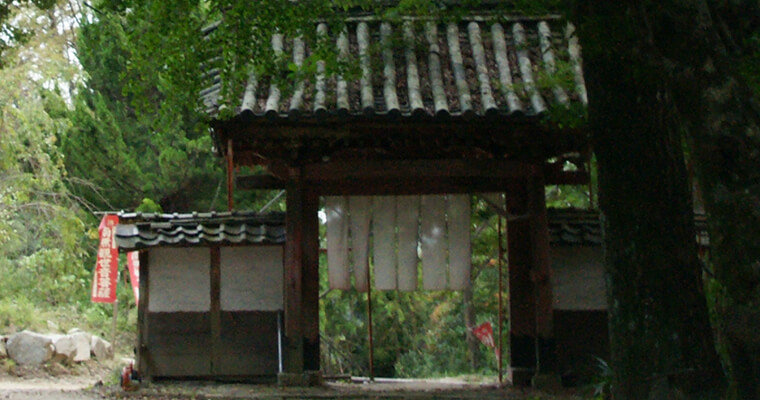
Outline
-
Honorific name
Manisan
-
Temple's name
Kongōza-ji
-
Sect
Tendai Shūgendō style
-
Religious service
Nyoirin Kannon
(Omnipotent Kannon)
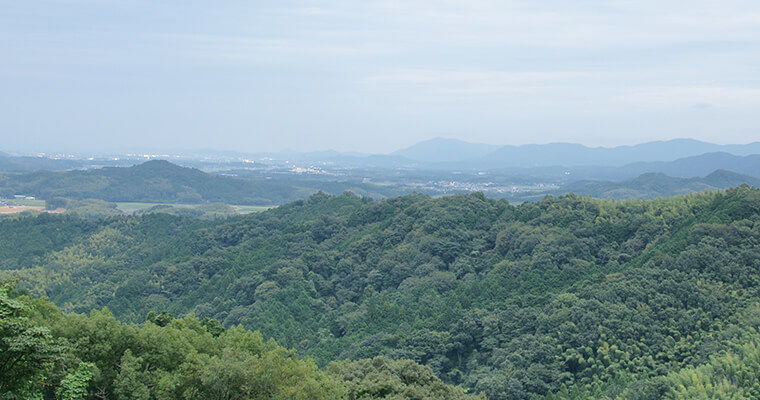
Details
-
Address
Mie Prefecture Taki-gun Taki-cho Kozaka 169
-
Phone number
0598-37-2717
-
Stamp place
Temple's counter
-
Opening hours
8:00 - 17:00
-
Official website
